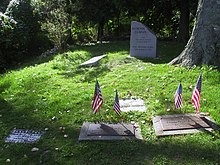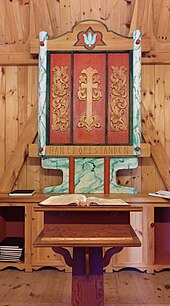Door County, WI
It is named after the strait between the Door Peninsula and Washington Island. This dangerous passage, known as Death's Door, contains shipwrecks and was known to Native Americans and early French explorers. The county was created in 1851 and organized in 1861.
Nicknamed the "Cape Cod of the Midwest," Door County is a popular Upper Midwest vacation destination.
History
Native Americans and French
Porte des Morts legend
Door County's name came from Porte des Morts ("Death's Door"), the passage between the tip of Door Peninsula and Washington Island. The name "Death's Door" came from Native American tales, heard by early French explorers and published in greatly embellished form by Hjalmar Holand, which described a failed raid by the Ho-Chunk (Winnebago) tribe to capture Washington Island from the rival Pottawatomi tribe in the early 1600s. It has become associated with shipwrecks within the passage. The earliest known written reference to the legend is from Emmanuel Crespel, who termed the peninsula "Cap a la Mort" in 1728.
Settlement and development
19th–20th century settlement

The 19th and 20th centuries saw the immigration and settlement of pioneers, mariners, fishermen, loggers, and farmers. The first white settler was Increase Claflin. In 1851, Door County was separated from what had been Brown County. In 1853, Moravians founded Ephraim after Nils Otto Tank resisted attempts at land ownership reform at the old religious colony near Green Bay. An African-American community and congregation worshiping at West Harbor on Washington Island was described in 1854. Also in 1854 the first post office in the county opened, on Washington Island. In the 19th century, a fairly large-scale immigration of Belgian Walloons populated a small region in the southern portion of the county, including the area designated as the Namur Historic District. They built small roadside votive chapels, some still in use today, and brought other traditions over from Europe such as the Kermiss harvest festival.
Shortly after the 1831 Treaty of Washington, the federal government surveyed what is now Door County to determine the value of the timber and to divide up parcels for eventual sale. Following the treaty, land in what is now the county was sold or granted to private citizens.
At the time the Homestead Act of 1862 was passed, most of the county's nearly 2,000 farmers were squatters earning most of their revenue from lumber and wood products. The remaining portion of the population consisted of about 1,000 fishermen and their families. Out of the total population of 2,948 people, 170 fought in the Civil War.
When the 1871 Peshtigo fire burned the town of Williamsonville, fifty-nine people were killed. The area of this disaster is now Tornado Memorial County Park, named for a fire whirl which occurred there. Altogether, 128 people in the county perished in the Peshtigo fire.
In 1885 or 1886, what is now the Coast Guard Station was established at Sturgeon Bay. The small, seasonally open station on Washington Island was established in 1902.


Early tourism
Even after the Ahnapee and Western extended service to Sturgeon Bay in 1894, many tourists continued taking the railroad to Menominee, Michigan to embark on steamships bound for communities in Door County. This route over Green Bay bypassed poor road conditions in the northern part of the county, which persisted until the early 1920s. Only after crushed stone highways were built did motor and horse-drawn coaches become popular for transportation between Sturgeon Bay and the northern part of the peninsula. By 1909 at least 1,000 tourists visited per year, a figure which grew to about 125,000 in 1920, 1 million in 1969, 1.25 million in 1978, and 1.9 million in 1995.
20th–21st-century events
In 1913, The Old Rugged Cross was first sung at the Friends Church in Sturgeon Bay as a duet by two traveling preachers.
In 2004, the county began a sister cities relationship with Jingdezhen in southeastern China.
Geography
According to the U.S. Census Bureau, the county has a total area of 2,370 square miles (6,100 km), of which 482 square miles (1,250 km) is land and 1,888 square miles (4,890 km) (80%) is water. It is the largest county in Wisconsin by total area. The county has 298 miles (480 km) of shoreline.
The county covers the majority of the Door Peninsula. With the completion of the Sturgeon Bay Shipping Canal in 1881, the northern half of the peninsula became an artificial island. This canal is believed to have somehow "caused a wonderful increase in the quantity of fish" in nearby waters and also caused a reduction in the sturgeon population in the bay due to changes in the aquatic habitat. The 45th parallel north bisects the "island", and this is commemorated by Meridian County Park.
Climate
The county has a humid continental climate (classified as Dfb in Köppen) with warm summers and cold snowy winters. Data from the Peninsular Agricultural Research Station north of the city of Sturgeon Bay gives average monthly temperatures ranging from 68.7 °F (20.4 °C) in the summer down to 18.0 °F (−7.8 °C) in the winter. The moderating effects of nearby bodies of water reduce the likelihood of damaging late spring freezes. Late spring freezes are less likely to occur than in nearby areas, and when they do occur, they tend not to be as severe.
Attractions

Today, most tourists and summer residents come from the metropolitan areas of Milwaukee, Chicago, Madison, Green Bay, and the Twin Cities, although Illinois residents are the dominant group both in Door County and farther south along the eastern edge of Wisconsin.
Recreational lands

Lands open to public use
Door County is home to six state parks: Newport State Park, Peninsula State Park, Potawatomi State Park, Whitefish Dunes State Park, Rock Island State Park, and Grand Traverse Island State Park. There are four State Wildlife and Fishery Areas and also State Natural Areas that allow free public access. Additionally, Plum Island and Green Bay National Wildlife Refuge are seasonally open for public recreation.
Waters
Lakes and ponds
Besides Lake Michigan and Green Bay, there are 26 lakes, ponds, or marshes and 37 rivers, creeks, streams, and springs in the county. The two deepest lakes, Mackaysee Lake at 26 feet (8 m) and Krause Lake at 24 feet (7 m) are on Chambers Island.
Living plant collections
Living plant collections include the orchid project at The Ridges Sanctuary in Baileys Harbor and the U.S. Potato Genebank and a public garden in Sevastopol.
Animals
Unique vertebrates
Tamias striatus doorsiensis, a subspecies of eastern chipmunk, is only found in Door, Kewaunee, Northeastern Brown, and possibly Manitowoc counties. In 1999, the Wisconsin Natural Heritage Inventory listed 24 aquatic and 21 terrestrial animals in Door County as "rare."
Birds
As of 2018, 166 species of birds have been confirmed to live in Door County, excluding birds seen which lack the habitat to nest and must only be passing through.
Other invertebrates
Kangaroo Lake State Natural Area has the largest breeding population of the endangered Hine's Emerald Dragonfly in the world.
The Lake Huron locust lives on dunes in the county and is not found anywhere else in the state.
Culture
Lighthouses and historical sites
Including both Lake Michigan and Green Bay shorelines, there are 50 total lights and lighthouses, besides lighted buoys. Out of these, there are 10 historically significant lighthouse structures and sets of lights still serving as navigational lights. Most of them were built during the 19th century and are listed in the National Register of Historic Places: Baileys Harbor Range Lights, Cana Island Lighthouse, Chambers Island Lighthouse, Eagle Bluff Lighthouse, Pilot Island Lighthouse, Plum Island Range Lights, Pottawatomie Lighthouse, and Sturgeon Bay Canal Lighthouse. Other functioning historic lighthouses in the county include the Sherwood Point Lighthouse and the Sturgeon Bay Canal North Pierhead Light. The Boyer Bluff Light is mounted on an 80-foot skeletal tower. In addition, the Baileys Harbor Light is a non-functioning 19th century lighthouse.
Thirteen historical sites are marked in the state maritime trail for the area in addition to nine roadside historical markers. In Sturgeon Bay, the tugboat John Purves is operated as a museum ship. Including lighthouses, the county has 72 properties and districts listed on the National Register of Historic Places. There are 214 known confirmed and unconfirmed shipwrecks listed for the county, including the SS Australasia, Christina Nilsson, Fleetwing, SS Frank O'Connor, Grape Shot, Green Bay, Hanover, Iris, SS Joys, SS Lakeland, Meridian, Ocean Wave, and Success. The SS Louisiana sank during the Great Lakes Storm of 1913. Some shipwrecks are used for wreck diving.
Scandinavian heritage

Scandinavian heritage-related attractions include The Clearing Folk School, two stave churches, structures in Rock Island State Park furnished with rune-inscribed furniture, and Al Johnson's Swedish Restaurant, which features goats on its grassy roof. In Ephraim, the Village Hall, the Moravian and Lutheran churches, and the Peter Peterson House are listed in the National Register of Historic Places, as is the L. A. Larson & Co. Store building in Sturgeon Bay. Although fish boils have been attributed to Scandinavian tradition, several ethnicities present on the peninsula have traditions of boiling fish. The method common in the county is similar to that of Native Americans.
Industry
In Sturgeon Bay, industrial tourism includes tours of the Bay Shipbuilding Company, CenterPointe Yacht Services and other manufacturers.
Radio stations
Economy
Door County's economy is considered a "forestry-related tourism"-based economy. In 2020, the total gross domestic product (GDP) of the county was $1.39 billion, with the $274 million manufacturing industry overtaking real estate and rental and leasing that year to become the leading industry in the county at 19.7% of the overall GDP.
Transportation
Land
According to the Wisconsin Department of Transportation (WisDOT), in 2021 Door County had 1,270 miles (2,040 km) of roadways.












